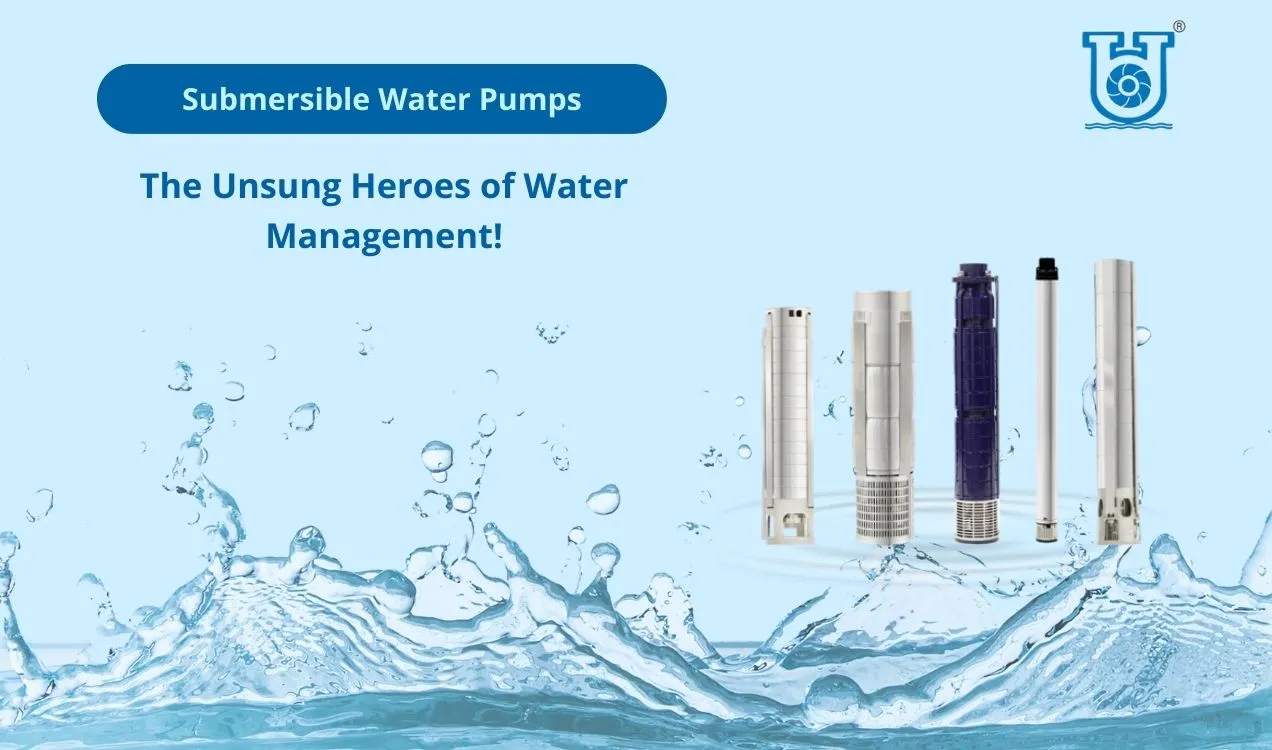A submersible water pump operates below the surface of the water, unlike an exterior pump, which requires elaborate infrastructure and obtrusive pipes. By drawing water, they can maintain water circulation through a closed-loop system.
In addition to improving space management, this continuous movement maintains water circulation, which keeps aquatic life healthy and vibrant. A submersible water pump requires less maintenance since it keeps the pump cool, which reduces stress and strain on the pump
Dewatering Submersible Pumps
When dealing with building sites, mines, or any location where accumulation of water becomes an obstruction, dewatering submersible pumps appear as heroes. These pumps are specially made to remove excess water, ensuring a dry working environment and preventing water-induced damage to infrastructure. Operating underwater, these submersibles efficiently pump out water, offering ease and effectiveness in controlling unwanted water accumulation.
The uses of dewatering submersibles are diverse, from handling flooded areas during natural disasters to keeping dry conditions in underground tunnels or basements. Their versatility and ability to handle different water depths make them essential tools in construction sites and in disaster management.
ETP & STP Submersible Pumps
Submersible pumps are vital in Effluent Treatment Plants (ETPs) and sewer Treatment Plants (STPs), crucial for purifying industry and sewer waste before release. In ETPs, they help in filtering, aeration, and disinfection of industrial effluents, surviving tough conditions. Similarly, STPs allow sewage treatment stages, handling varied compositions successfully.
Water Treatment Plant Submersibles
In comparison to ETPs and STPs, Water Treatment Plants focus on purifying raw water from natural sources like rivers, lakes, or groundwater for safe human usage. Submersible pumps in WTPs enable the movement of water through different treatment steps like sedimentation, filtering, and disinfection, ensuring the supply of clean and drinkable water.
These submersibles pumps are designed to handle different impurities found in raw water, making the purification process more efficient. Their submersion in water allows for better energy efficiency and lower noise levels compared to standard above-ground pumps.
Application of Submersible Pumps
Clean Water Pumping
Submersible pumps are essential when it comes to moving clean water. They are widely used in different applications, such as:
-
Residential Water Supply
Submersible pumps provide houses with a stable and continuous water supply. They can be placed in wells or boreholes, taking clean water from beneath the ground to meet household needs, such as for drinking, bathing, cooking, etc.
-
Agricultural Irrigation
Farmers rely on underwater pumps to properly irrigate their lands. These pumps can send water straight to the root zones of crops, ensuring optimal moisture levels for growth and yield.
-
Industrial Applications
Industries use underwater pumps for processes like cooling, water movement, and more. Their submerged form allows them to work softly and effectively, making them ideal for industrial settings.
Dirty Water Pumping
Submersible pumps are not limited to clean water uses; they are also good at handling dirty water, which often includes debris, solids, and sediments. Some key uses include:
-
Construction Sites
Construction sites often face muddy and dirty water. Submersible pumps, widely referred to as “dirty water pumps,” are built to handle this challenge efficiently. They can quickly remove extra water, keeping the spot dry and safe.
-
Basement Flooding
In cases of sudden heavy weather or plumbing problems, basements can flood. Submersible pumps equipped to handle dirty water come to the rescue, quickly pumping out the water to avoid any damage to the property and mould growth.
-
Wastewater Treatment
In the world of wastewater treatment plants, submersible pumps are workhorses that handle sewage and wastewater effectively. They move dirty water through the different stages of treatment, ensuring that the process goes smoothly.
Specialized Applications
Beyond clean and dirty water pumping, underwater pumps also find their place in various specific applications:
-
Marine Use
Submersible pumps are often used in boats and ships to remove water from bilges, keeping them from taking on extra water during journeys.
-
Mine Operations
Mines can be flooded, and submersible pumps are vital for dewatering these areas, ensuring that mine operations continue without breaks.
-
Fountain and Pond Maintenance
In beautiful fountains and ponds, submersible pumps are used to move water, create stunning water shows, and keep a healthy aquatic environment for fish and plants.
Technological Advancements and Environmental Impact
Continual progress in submersible pump technology deeply impacts water management methods. Innovations like clever sensors, energy-efficient designs, and online tracking capabilities are changing performance standards while concurrently curbing energy waste and upkeep requisites. These advancements greatly help to reduce the environmental effect of water treatment methods, promoting eco-friendliness across businesses.
Moreover, the adoption of submersible systems aligns with environmental goals by optimizing water resource allocation and curbing waste. Through efficient dewatering processes, these systems mitigate waterlogging, saving water resources and avoiding harm to delicate environments. In the world of wastewater treatment, the effective operation of submersible technologies plays a key part in averting water pollution. This helps protect aquatic life and keeps ecological balance by ensuring the removal of contaminants. Thereby stressing the vital role of submersibles in bolstering sustainable water management practices.
Conclusion
Submersible water pumps are the hidden heroes of the water management industry which are quietly and dependably transferring water below the surface. These water-submersible pumps are a popular option for a variety of applications due to their tons of advantages.
Efficiency, decreased noise, increased safety, adaptability, and space-saving design are some among many advantages of submersible pumps. Submersible water pumps are essential for reliable and efficient water transfer, whether it’s for controlling industrial operations, irrigating areas, or delivering water to residences.


